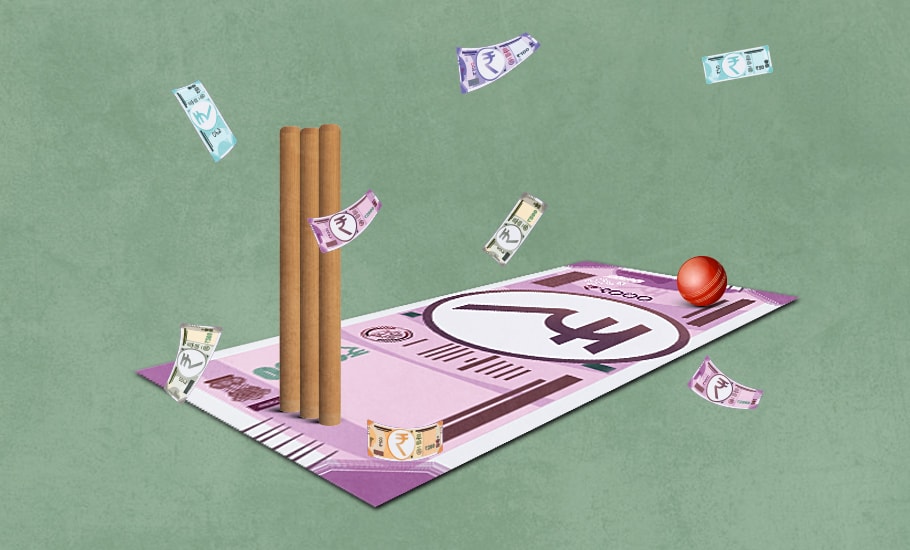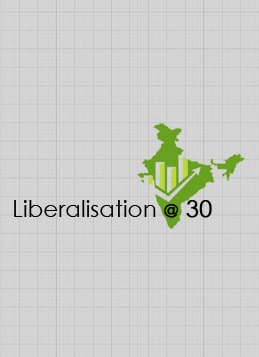
Cricket Corruption: How reforms led to the match-fixing scandals
In this ever-changing milieu, cricket emerged as the mafia’s manna. Betting, gambling, and fixing in the game became an illegal industry that was larger than the size of the combined earlier businesses.


A Federal series on three decades of reforms
Cricket Corruption: How reforms led to the match-fixing scandals
Uploaded 30 November, 2020

It was indeed ironic that the Indian Premier League (IPL) was held in the UAE this season. For over a decade, the league was embroiled in charges of fixing, betting, and speculation. For three decades, Dubai and Sharjah were pinpointed by several investigation agencies as the headquarters of a global crime syndicate that controlled gambling and fixing in cricket. IPL this year was a reminder of a ghost-like combination of the thrill of the matches, glitter of money, and mafia-kill.
Liberalisation, in fact, was responsible for the nefarious era of fixing and betting.
By the early 1990s, the mafia was entrenched in Indian metros and major cities, the most prominent being Mumbai, Chennai, and Kolkata. They competed with each other in some ways, aided each other, but established independent fiefdoms, both geographically and sector-wise. Their areas of operations included narcotics and guns, smuggling (mostly gold), movies, real estate, money transfers, and parallel governance.
Most of their illegal businesses were decimated by reforms. In his book on cricket, corruption and reforms, James Astill, writes, “The opening up of the Indian economy has been a bigger blow to the underworld, leading to the collapse of their smuggling business. It has also led, more gradually, to the gangsters being pushed out of Bollywood.” Real estate passed into the hands of new commercial landlords, who had their own gangs and set of politicians in their pockets.
Huge and recurring cuts in import duties, which began in the mid-1980s, wrecked the illicit business in electronics, man-made cloth and, most importantly, gold. The import of bullion from the Middle-East was one of the mainstays of Mumbai and other mafia. Over time, Bollywood became corporatised, especially with the entry of foreign giants. Although real estate retained its dark hues, more and more payments were made in white, especially after the popularity of home loans.
Until the 1980s, a sizable portion of Indian cash was illegally transferred to global tax havens through Hawala. A large component of the earnings of Indians settled abroad came in through the same route. Hawala financed narcotics and smuggling. Reforms saw opportunities for higher returns in Indian businesses and stocks. Idle black money sought these destinations. Banks were willing to help NRIs with money transfers, and launder money from black to white. Hawala was ruined.
After the 1993 Mumbai bomb blasts, and the earlier demolition of Babri Masjid and Hindu-Muslim riots, large chunks of the mafia were devastated. Their dons were forced to flee India, and some of their Indian fiefdoms were divided among the minor gang leaders, who later expanded their empires. The twin trends weakened the underworld’s ability to use violence to lord over legitimate governments, as well as the flexibility to run parallel ones to help its supporters.
In this ever-changing milieu, cricket emerged as the mafia’s manna. Betting, gambling, and fixing in the game became an illegal industry that was larger than the size of the combined earlier businesses. Several changes within the sport helped the crime syndicate to rule it. Yet again, reforms were largely responsible for the transformations of the game, players, administrators, followers, and mafia. Cricketers, gangsters, and members of cricket boards struck an unholy alliance.
First, Indians were fascinated with ODIs after India unexpectedly won the World Cup with a motley set of players in 1983. By the 1990s, it had a strong team that could compete with others. Second, TV broadcast and cable distribution boomed in the early 1990s, which led to millions of new TV viewers. Third, Jagmohan Dalmiya of Cricket Association Bengal wooed huge money into the game through the sale of telecast rights, and sponsorships. It led to huge amounts in TV advertising.
The combination of popularity, money and viewers became explosive when India and Pakistan played each other several dozen times in the 1990s, in mostly ODIs, and generally at neutral grounds like Sharjah. By the mid-1990s, Dubai (UAE) was the new headquarters of the exiled Mumbai mafia, which was led by Dawood Ibrahim. Indian cricketers, as also those from other nations, became chummy with gangsters. Fixing became the logical extension of betting and gambling.
Super cop Rakesh Maria agreed in an interview, “In the 1990s the underworld was hosting whole cricket teams, with impunity, giving the players expensive watches and other gifts. That is how the match-fixing nexus started.” By the turn of the last century, these dastardly links detonated with earth-shattering force. India’s CBI revealed how cricketers from India, Pakistan, Australia, South Africa, and West Indies were involved. Several players were banned.
Astute cricket observers felt that this was the culmination of how cricket started. Mario Rodriguez wrote in a piece that betting and match-fixing were the norm, and not the exception, in the 18th and 19th centuries. In his 1851 book, Rev James Pycroft quoted someone who said, “You see, sir, matches were bought and matches were sold, and gentlemen who meant honestly lost large sums of money….” The laws of cricket were originally scripted to ensure fair bets and wagers.
Only in the Victorian era did the sport become an icon for honesty, integrity, and fairness. There was a feeling that after the excesses of the 1990s, the same would happen in this century. But the scandals continued. ‘Cricket Commercial’ or sport administrators’ obsession with money was partly responsible for this. To understand how the game became an extreme capitalist version of business and free market, one has to only skim through the list of BCCI presidents.
From 1990 till now, the Indian board was dominated by politicians and businessmen. Among the latter were Dalmiya, N. Srinivasan, and A.C. Muthiah. Another one, Lalit Modi of the Modi clan, influenced cricket without being the head of BCCI. Even politicians like Sharad Pawar and Madhavrao Scindia had a sense of commercial interests. Some of them, in their own way, downplayed the impact of fixing. Many of them continued as if the malaise didn’t exist.
Not surprisingly, fixing raised its ugly head again. This time it was in the form of spot-fixing, and the main arena was IPL. Critics continuously berated that games in the league, which were meaningless in terms of results, were fixed. It was out in the open when players and owners of a couple of team franchisees were accused of fixing and gambling. This time, more severe action was taken, players and teams were suspended, and the Supreme Court tried to clean up the dirt.
Spot-fixing, surprisingly, revealed that reforms in the economy and sports were responsible for the change in cricket corruption. After the various national cricket boards, and ICC, inculcated anti-corruption measures at the beginning of this century, match-fixing, which involved the bribing of 5-6 senior players in each team, became difficult. However, it was easier to fix a player or two, which was enough to sway the results in IPL, and other T-20 games and leagues.
Economic reforms implied that the mafia fought for larger slices of the profitable cricket-fixing pie. Underworld’s decimation in the 1990s intensified competition between outfits. The war spilled out on the streets. In January 2003, as Ed Hawkins wrote, Sharad Shetty, a key lieutenant of Dawood, was shot 20 times in a Dubai residential area. The kill was ordered by a rival, Chhota Rajan, in an attempt to get a toehold in the betting-fixing racket before that year’s World Cup ODI.
Over time, reforms ensured that the mafia’s stranglehold loosened. In many nations, betting became legal. The Internet allowed Indians to bet on the global websites on the sly, and information on odds for the games became public. The first meant that neither a dominant Dubai-based syndicate nor a cartel based out of several locations had Indian gamblers as a captive audience. The second disrupted mafia’s ability to dole out odds, which were now guided by global websites.
Obviously, if the gangsters couldn’t be responsible for the odds, they could still fix them. But as fixing matches became tougher, the underworld decided that it was better to fix events within a game, especially T-20s, to hugely influence the odds. For example, one bad over, or a good one, could change the odds of the team reaching 160, or crumbling below 150 in a 20-over match. This was the genesis of spot-fixing, which allowed the mafia to still manage the odds.
However, spot-fixing was a much easier play than match-fixing. Anyone with power, influence, and money could do it. Hence, the mafia soon lost control over it too. Cricket corruption became truly democratized with different sets of actors involved in the dark art of spot-fixing.

